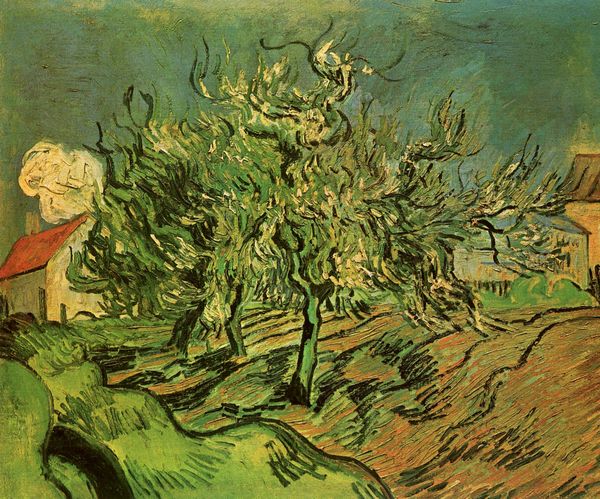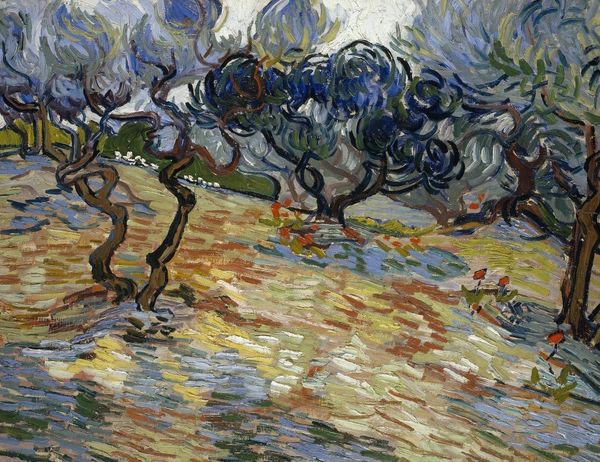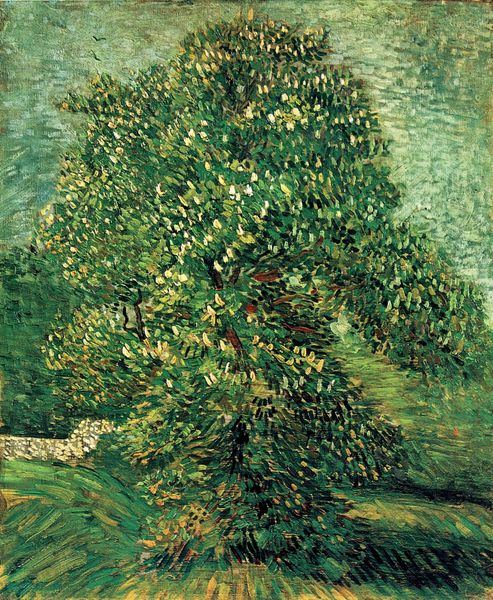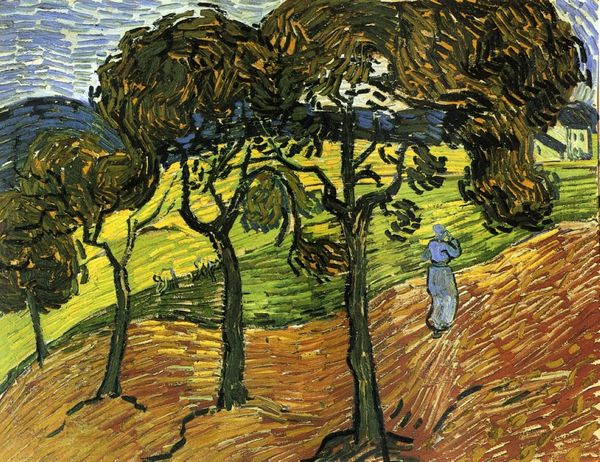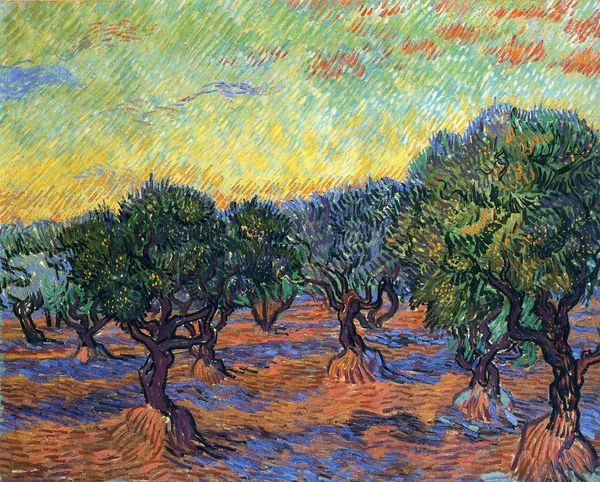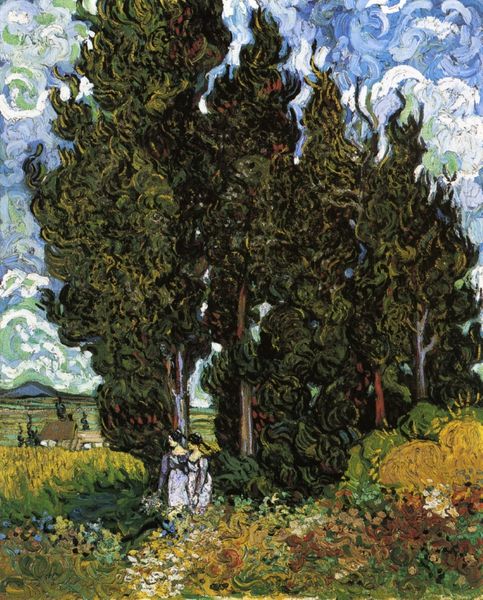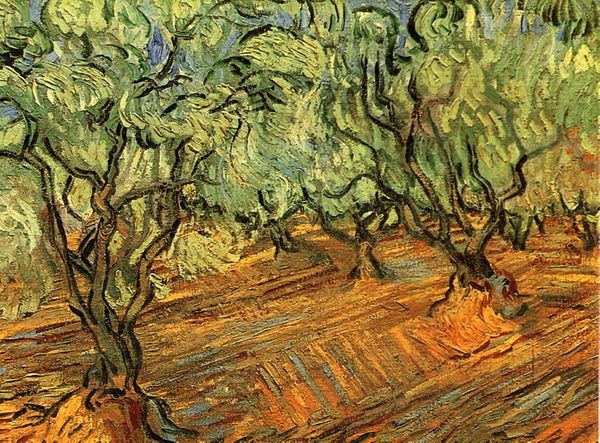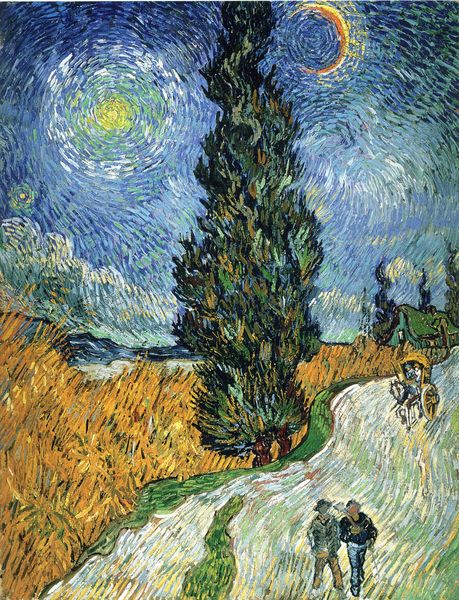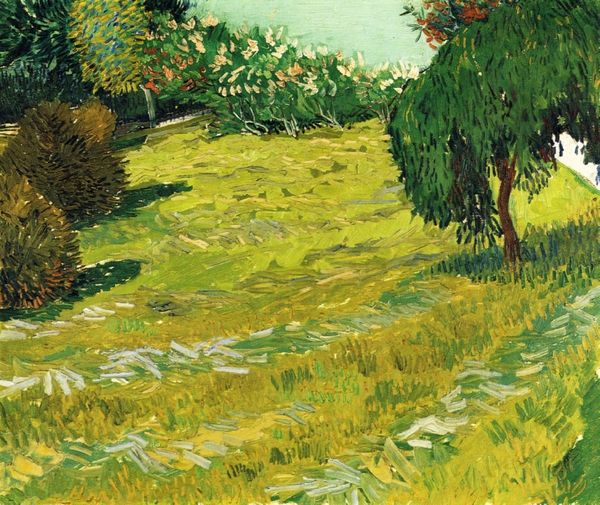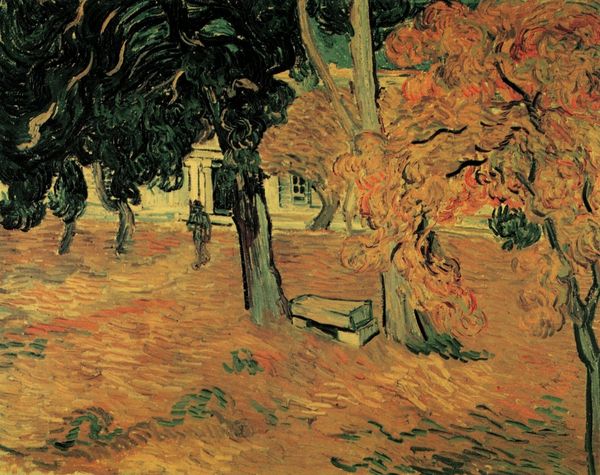
plein-air, oil-paint
#
tree
#
impressionism
#
plein-air
#
oil-paint
#
landscape
#
impressionist landscape
#
figuration
#
post-impressionism
Dimensions: 50.5 x 63 cm
Copyright: Public domain
Curator: We’re looking at Vincent van Gogh's "Chestnut Tree in Blossom," painted in 1890, a year marked by profound personal struggle. It is currently housed at the Kröller-Müller Museum in the Netherlands. Editor: My initial reaction is… unrestrained vitality. There's a sense of growth, even frantic energy in the brushstrokes. The thick impasto gives it a palpable, almost three-dimensional feel. But the viewpoint is very interesting to me, as if it wants us to ponder an obscured, half-there vision of this "plein air" scene. Curator: Indeed. It’s part of a series he created while at an asylum in Saint-Rémy. Note the location's impact, as the landscape provided one of the last tangible connections to life outside those walls. You see how Van Gogh uses a vibrant palette here to counter the effects of isolation? Editor: I read this as Van Gogh clinging to the natural world, in spite of an almost total alienation. I like that you're describing how art offered him agency within a controlling system of confinement; that said, look at those contrasting areas of color – bright yellows set against purples – to symbolize resistance to authority by reclaiming control of a life in turmoil. What do you think? Curator: It’s compelling to read resistance into his brushstrokes, to imbue color with political agency! While I certainly acknowledge his tumultuous emotions reflected within, his painting, more directly and powerfully, offered him autonomy amid medical supervision. Editor: Point taken. Although art making might bring internal autonomy, that vision may not extend beyond one’s individual experiences. The symbolism can speak to freedom within the structures of control imposed by society in general. Curator: Perhaps we can agree it provided both internal and potential outward freedom—he transforms confinement into an expression of boundless, subjective perspective, defying literal interpretation of space. Editor: Absolutely. Ultimately, what lingers for me is not just the obvious biographical reading, but also the subtle and forceful dialogue between interiority and outward expression. Curator: A powerful point: this piece really offers so much more than just what we might first see! Editor: Right—more than an individual expression, and equally about a fight to define an era for all people—even a world still seeking progress now.
Comments
No comments
Be the first to comment and join the conversation on the ultimate creative platform.
